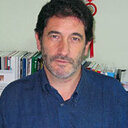Arachidonate metabolites and vasospasm after subarachnoid haemorrhage.
Keywords
Coimriú
A wide literature exists about the pathogenesis of cerebral arterial spasm following subarachnoid haemorrhage: several compounds have been identified in human cerebrospinal fluid as possible vasoactive agents involved in the biochemical mechanism of vasospasm onset. Many experimental evidences exist for a major involvement of arachidonate metabolites. The present work represents a review of experimental data supporting the hypothesis of cerebral arterial spasm as a result of an imbalanced vascular regulatory mechanism involving arachidonate metabolites. The authors have also monitored, in 25 cases of aneurysmal subarachnoid haemorrhage, lumbar and cisternal CSF levels of prostacyclin and PGD2, as representative of vasodilating and, respectively, vasoconstrictor compounds. In all cases CSF arachidonate metabolite levels after SAH were significantly higher than in control cases. Ten patients presented with symptomatic vasospasm: lumbar CSF PGD2 levels show fluctuations with superimposed peaks related to the neurological deterioration due to vasospasm, while lumbar CSF prostacyclin concentration-trend suggest a decreasing synthesis. In 15 patients presenting without vasospasm, lumbar CSF concentration of arachidonate metabolites are in a 'steady-state'. These data confirm the existence of an imbalanced biochemical situation promoting vasospasm, markedly in cisterns near to the ruptured aneurysmal wall. The evaluation of cisternal CSF levels of arachidonate metabolites supports the hypothesis of the clotting phenomenon around the ruptured aneurysm as an important predictive pattern of vasospasm, as shown in CT findings.



